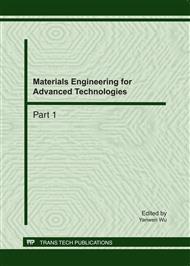p.311
p.317
p.323
p.329
p.335
p.341
p.347
p.352
p.357
Research on PLC-Based Automatic Liquid Pig-Feeding System
Abstract:
The automatic pig-feeding system gains more and more attention on the urgent need of improving pig-feeding efficiency and reducing labor intensity. An integrated automatic pig-feeding system is presented. It includes two sets of feeding-mechanisms and feeding-tanks which can work together so as to improving feeding efficiency. A drug-tank is integrated to complete the task of pig diseases control and prevention. And a buffer-tank is also integrated to save the remaining diet in the pipeline after feeding process. The whole system has a compact structure as well as fully functions. In addition, the fully automatic pig-feeding process is implemented using PLC and monitoring software. The experiment results show that this system can improve feed efficiency and reducing labor intensity greatly.
Info:
Periodical:
Pages:
335-340
Citation:
Online since:
June 2011
Authors:
Keywords:
Price:
Сopyright:
© 2011 Trans Tech Publications Ltd. All Rights Reserved
Share:
Citation:


